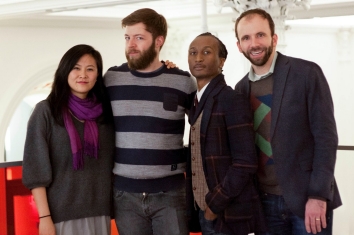
The Tisch Graduate Film Program recently announced Forest Conner, Artel Great, Michelle Ow and Collin Whitlow as the 2014 fellows for the Cinema Research Institute, which will support their research on financing, producing, marketing and distributing films.
“The fellowship is a great opportunity for people who want to think about independent film in a different way,” said Ow, whose project will focus on how movie ticket pricing affects different demand variables such as attendance and profit.
“The motivation behind something like this is not just that you want to be nostalgic,” Ow added. “[It] is that you want to be exploratory, you want to be curious about where the industry is going and what its future [is].”
Great will explore the future outside of conventional Hollywood productions, focusing on the development of Project Catalyst, a distribution model that emphasizes the importance of multicultural films.
“As a media scholar I have been studying that in the mainstream there had been more diversity, but somewhere along the way that changed,” Great said. “What happened to the personal stories, to the intimate stories that reflect true American life?”
With Project Catalyst, Great hopes to recognize unheard stories and build community through cinema and art to promote more diversity in media industries.
Other fellows’ projects will examine the future of financing and marketing films. Whitlow’s project intends to create an index based on film financial returns to provide more transparency for prospective investors.
“People tend to react negatively when you try to put math into art, but I think the opposite. I think film can only benefit from it,” Whitlow said.
Whitlow’s goal is to increase investment in everything from small independent films to big blockbusters by providing a more securely calculated film performance.
“I think in film there is a lot of space to reinvent and keep us busy for many, many years,” Whitlow said.
All of the fellows’ research during the year will challenge film’s current creative and business horizons.
“[Film] people have found ways to make things work [by] doing the same thing over and over again, so that they are scared to do other things and that leaves no room for experimentation,” Conner said. “But influence from the technology side is changing that and allowing people to experiment with their films, and I think CRI is a big part of expanding that.”
Conner’s research is about improving film marketing by using analytics to offer filmmakers and producers a better understanding of their potential audience.
Through different approaches, the four projects will revive the discussion between films and consumers as they recognize the industry’s areas of opportunity.
“What we are researching is not just ways to make money, but ways of expanding the knowledge of what is possible within the industry — to open up a million and more ideas for the industry as a whole,” Conner said.
A version of this article appeared in the Monday, April 21 print edition. Lorena Tamez is a staff writer. Email her at [email protected].

























































































































































